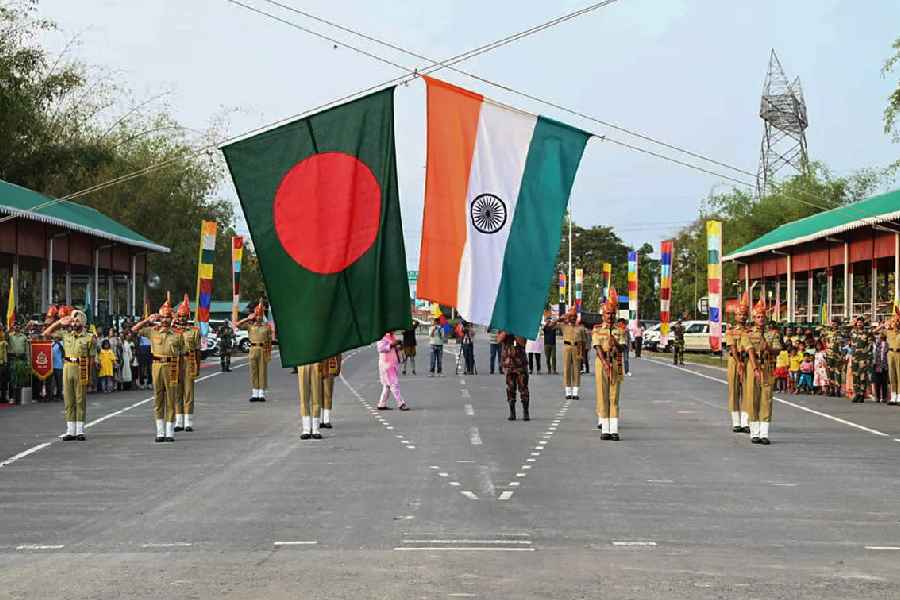The Indian Army conducted back-to-back exercises, ranging from airborne incursions to anti-tank firing drills, at different locations in the strategic Siliguri corridor in the past few days, which is a testament to the force’s enhanced focus on the country’s thinnest stretch sandwiched between Nepal and Bangladesh.
On March 4, special forces carried out a rehearsal of their aerial insertion capability and rapid response near the northern border.
Combatant free-fallers carrying logistic supply loads jumped from flying machines from an altitude of around 20,000ft and landed on precision-guided platforms.
After landing at a location in the Siliguri corridor, the free-fallers established surveillance positions to guide fire to selected enemy targets. As a follow-up, an airborne force of 400 personnel was deployed by air to capture designated objectives swiftly.
“It is an important exercise for aerial insertion of troops, equipment or supplies, directly into the tactical battle zone. The troops inserted aerially are assigned with specific tasks like the capture or the destruction of critical enemy infrastructure,” said a retired army officer.
After the Doklam standoff between the Indian and Chinese troops in 2017, the Indian defence forces beefed up vigil in the Siliguri corridor. Doklam is located at the tri-junction of India, China and Bhutan.
The corridor, also known as “Chicken’s Neck”, is the slimmest stretch of India, where the width of the country is 20 to 24 kilometres. The corridor has Nepal on north and Bangladesh on the south.
“The corridor is vital for India as it is through this stretch that every resource of manpower moves to the entire Northeast,” said an official of the state’s intelligence agency.
After the Doklam stand-off, there was a violent skirmish between Indian and Chinese troops in the Galwan Valley in Ladakh in June, 2020.
Reports emerged last year that China was developing infrastructure at Chumbi Valley, which is located between Sikkim and Bhutan.
“Such situations on the northern borders have made it imperative for the Indian Army to focus on the operational tasks of its reserve formations and give impetus to its fighting capabilities in high altitude mountainous terrains,” said a defence analyst.
After the airborne exercise, troops of the Trishakti Corps posted in high altitudes of Sikkim, the Himalayan state that sits on the India-China border, carried out anti-tank drills.
“Trishakti warriors test their mettle against metal. Indian Army remains ever vigilant on the borders. Trishakti warriors hone their anti-tank firing skills on the super high altitude plateau region of north Sikkim,” said a tweet by the Trishakti Corps which is headquartered at Sukna near Siliguri.
A source said: “ATGMs (anti-tank guided missiles or weapons), which are used to defeat armoured combat vehicles, were used in the drill. The exercise was carried out at an elevation between 16,000ft and 17,400 ft in Sikkim.”











